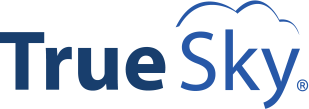Financial Process Automation is the Secret to Saving Time and Money — Here’s How
 Financial process automation can save businesses time and money, yet many CFOs are reluctant to embrace it.
Financial process automation can save businesses time and money, yet many CFOs are reluctant to embrace it.
There are many directions financial process automation can take — employee expense automation, accounts payable automation, accounts receivable automation, automating the budgeting and forecasting process, and beyond.
The result can be less time spent on monotonous administrative tasks, like data entry, and more time spent on analysis, looking for patterns, and refining systems.
Bold CFO shared this great article called “5 Unreasonable Reasons CFOs Don’t Automate” and we found all five to be true.
We thought we would share some of our reasons that we have found businesses to be reluctant to start automating.
- Questioning the ROI
Automation software can be pricy, but it is often for a good reason — many of the tools really do save a business a lot of money in the long run.
For example, employee expense automation has been shown to cut expense processing costs from $41 per requisition to just $7 — that is a lot of savings.
Turning to automation could mean that your office requires fewer staff, especially if there are roles geared towards primarily data entry.
It also might mean that staff can do more with their time and look for ways to bring in more business, rather than just focusing on what has already been done. For example, the budgeting process traditionally can take up a lot of time. If department managers, like the sales department head, do not have to spend as long on the financial process (because it is automated) they could put more energy back into the sales team.
Many software automation developers will sit down with your team and perform an ROI analysis. In most cases, the initial cost will quickly be made up in the savings. Even if you are not sure, it is worth having a conversation about the potential.
- Implementation Difficulties
Implementing a software project can be complex and take a long time, which is another area where CFOs tend to be reluctant. When you decide to automate, you are not just paying for the software and using it right away. You have to plan for installation, work with the IT department to make sure your network can support the program, train staff, transition from the old process, etc.
It can be a lot to plan, on top of the other day-to-day work.
However, implementation does not have to be a headache when you are working with the right software developers. The team providing the automation program might have experience with implementations and be able to guide you along the way. You could also consider bringing in a project manager specifically for the implementation.
- Not Knowing Where to Start
As we mentioned above, there are many ways to start financial process automation — employee expenses, AP automation, AR automation, budgeting, forecasting, and more. It is nearly impossible to do it all at once, but it can be difficult to narrow down the list.
Our advice is to look at your organization and ask what financial processes are currently eating up the most time and resources and use that as your starting point.
For instance, budgeting automation is usually a good first step because in most companies, the budgeting process can take up a lot of time. Plus, many businesses could benefit from more frequent budgeting and forecasting (for example, moving to rolling forecasts) but are reluctant to do so because of the resources it would take. With automation software, though, rolling forecasts could actually take less time than the non-automated budget process.
You might also consider looking for software that does more or is scaled for growth. There may be more features available with a piece of software that you could either implement right away, or plan to gradually introduce.
- Pushback from Staff
Most people are not huge fans of change. It is only human. But change is inevitable if you want to grow. Still, some employees will require more persuading than others. They might be afraid that new software would disrupt the current way of doing things. They also might not want new software that makes their job harder or could lead to job losses.
The solution can be to increase employee buy-in by bringing key staff into the decision-making process. Think about who would be most affected by the project. For instance, if you are automating the budget process, it might be your accounting team and your department heads who will be the most affected.
Sit down with these people (one-on-one or in a big group) and ask about their current pain points. What would they like done differently? What is working for them? And show them the options you are considering. You might consider having several of these people form a project management team so that they are involved with the implementation, understand why it is necessary, and can make sure that the solution ill work for them.
- Distractions
Bold CFO called this item “squirrels.” Most CFOs are busy. Most employees are busy. Adding another project onto their plate can seem like an added stressor.
You might get started researching a solution or planning an implementation, and then get distracted by the daily work. For instance, the budgeting process. Or you are working on a process, like accounts payable, and noting errors and inconsistencies. You might have the thought “we should really look into doing something about this,” but then an emergency comes up and the grievance is forgotten.
Automation can be easy to put on the backburner, but it should not be left there. If this is happening in your organization, consider either appointing an automation project manager, setting meetings in advance to discuss possibilities, or finding another way that works with your organizational style to keep it a priority.
True Sky’s corporate performance management software automates the budgeting, planning, and forecasting process, leaving you more time to focus on analysis. With many successful implementations under our belt, we can help you plan for your business.
Contact us today to learn more. Call 1 855 878 3759 or visit www.truesky.com.
Download our free eBook, Best Practices for Implementing a Budgeting Solution.



